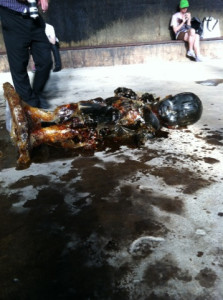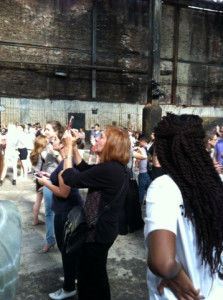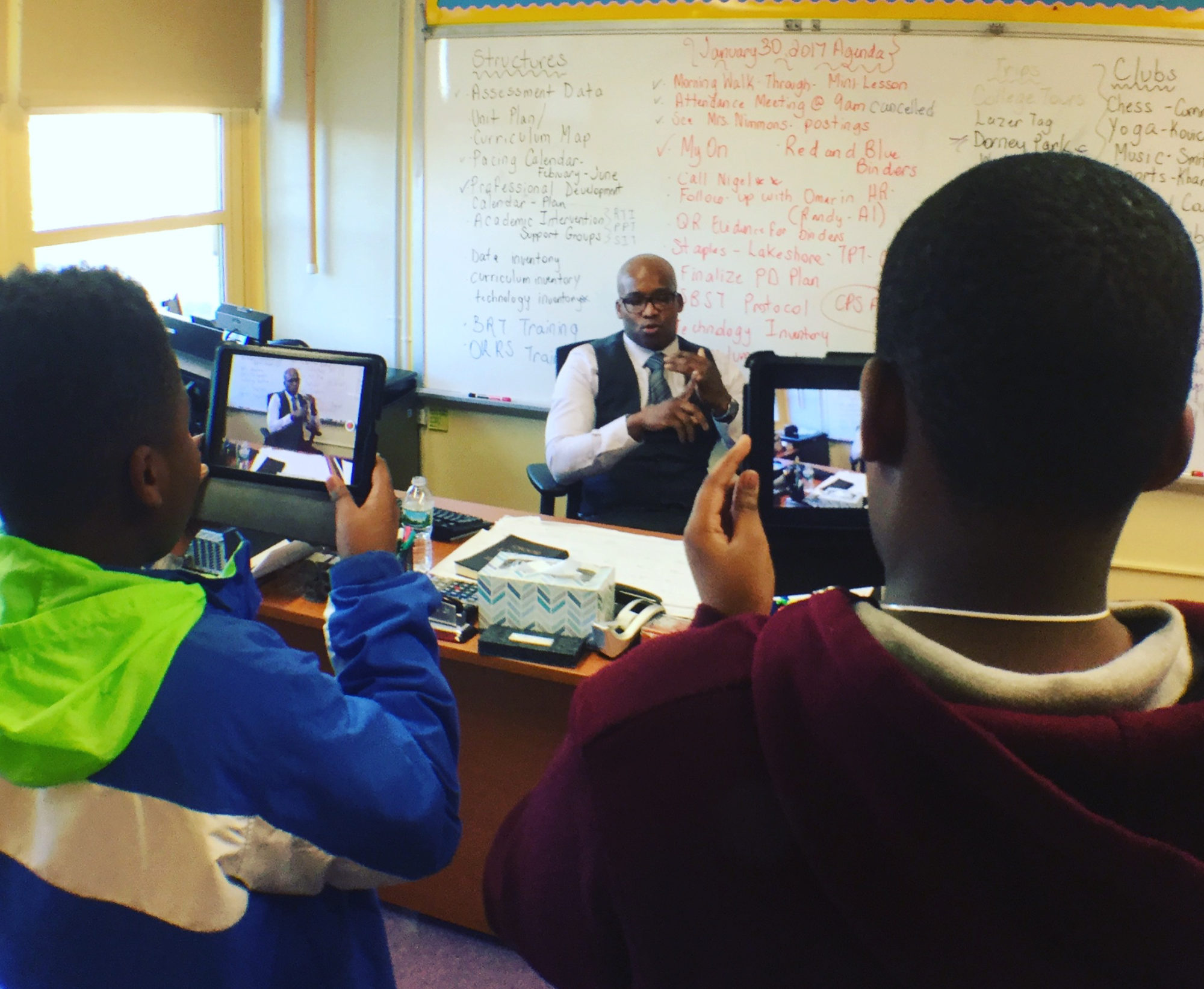The line stretches over two city blocks, and for a Friday afternoon, just after 5 p.m., it was said by many a friend to be the best time to go. What is causing this must-see frenzy at the abandoned asbestos-laden Domino Sugar Factory in Williamsburg’s Water’s Edge? Kara Walker‘s, A Subtlety, presented by CreativeTime, depicts a giant naked Mamie on her haunches made in styrofoam and covered with sugar. The not-so-subtle haunting works of art are a howl on race, gender, class and our complicated past with sugar cane and slavery. Since there are no tickets, and it’s free, the admission lines are getting longer. Admission is on a first-come, first-serve basis. Polite assistant’s tell you the line moves quickly and will be about 20 minutes, but we waited for more than 45 minutes. We didn’t care. It was the first visit to Williamsburg in over a couple of decades and were knocked out by the hyper-hip neighborhood and the mixed crowd of all ages, genders and ethnicities waiting in line. All entrants are asked to sign a release to indemnify the artist and CreativeTime from asbestos harm or any other harm that could happen while traipsing through the soon-to-be raised Domino Factory. The release also allows the creative team to use your photos, videos and images in marketing and future collaborative “A Subtlety” storytelling. We recommend you sign it so you don’t miss out on seeing one of the year’s most fascinating art experiences.
When we first entered the factory, hundreds of people were paying homage to Walker’s deity at the far end of the cavernous light-streamed room, it was the smell of the disintegrating slave boys made of sugar and molasses that was most arresting. The disturbing images of carnage and destruction of young slave boys are deeply resonant as black youths, who have barely reached puberty, are getting killed and killing each other in the projects of Brownsville, less than 10 miles from the art exhibit.

As we walked past the disintegrating child slaves we, like the hundreds of thousands participants, were awe-struck by the savage beauty of this complicated, brilliant work of art. As art is always said to push boundaries, Walker achieves this fully. Her work disturbs and enthralls on so many levels that we are still grappling with its visceral meaning. Slavery is a blight on all of us, and it will never be corrected, and we are still dealing with the same issues of race, class, gender. It’s a different kind of slavery.
Instead of the cane fields filled with slave children as their only option, many of our African-American boys in the Brownsville projects, and projects like them around the US, see death and jail before 25-years-old as their only viable choices. Walker’s art makes us look, take pictures and document.
She brings this appalling past to the forefront, where it should be, always.


